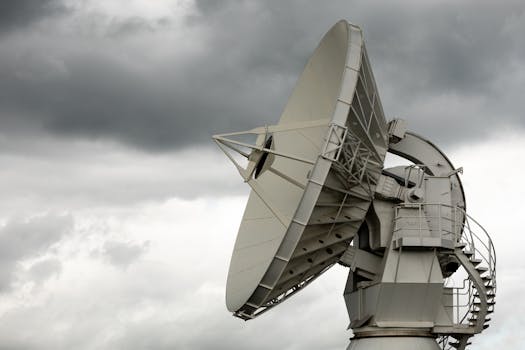GEO Satellites: Unlocking the Power of Geostationary Orbit
GEO satellites are a crucial part of modern satellite technology, providing a wide range of services including telecommunications, weather forecasting, and navigation. In this article, we will delve into the world of GEO satellites, exploring their history, applications, and future developments.

GEO Satellites: Unlocking the Power of Geostationary Orbit
GEO satellites, or Geostationary satellites, are a type of satellite that orbits the Earth at an altitude of approximately 36,000 kilometers, allowing them to remain stationary in the sky relative to a fixed point on the Earth’s surface. This unique characteristic makes GEO satellites an essential part of modern satellite technology, providing a wide range of services including telecommunications, weather forecasting, and navigation. In this article, we will delve into the world of GEO satellites, exploring their history, applications, and future developments.
History of GEO Satellites
The concept of GEO satellites was first proposed by science fiction writer Arthur C. Clarke in 1945. However, it wasn’t until the 1960s that the first GEO satellite, Syncom 2, was launched into orbit. Since then, hundreds of GEO satellites have been launched, with many more planned for the future. The development of GEO satellites has been driven by the need for reliable and efficient communication systems, as well as the desire to explore and understand our planet and the universe.
Applications of GEO Satellites
GEO satellites have a wide range of applications, including telecommunications, weather forecasting, navigation, and Earth observation. Telecommunications satellites, such as Intelsat and SES, provide internet and television services to millions of people around the world. Weather satellites, such as GOES and Meteosat, provide critical weather forecasting data, helping to predict storms and other severe weather events. Navigation satellites, such as GPS and GLONASS, provide location and timing data, enabling accurate navigation and mapping. Earth observation satellites, such as Landsat and SPOT, provide detailed images of the Earth’s surface, helping to monitor climate change, track natural disasters, and manage natural resources.
Future Developments in GEO Satellites
The future of GEO satellites looks bright, with many new developments and innovations on the horizon. One of the most significant trends is the increasing use of high-throughput satellites (HTS), which provide faster and more efficient communication services. Another trend is the development of smaller, more agile satellites, such as smallsats and cubesats, which are cheaper and easier to launch than traditional GEO satellites. Additionally, there is a growing interest in using GEO satellites for new applications, such as space-based solar power and asteroid mining.
Conclusion
In conclusion, GEO satellites are a vital part of modern satellite technology, providing a wide range of services and applications. From telecommunications and weather forecasting to navigation and Earth observation, GEO satellites play a critical role in our daily lives. As technology continues to evolve and improve, we can expect to see even more innovative and exciting developments in the world of GEO satellites.

